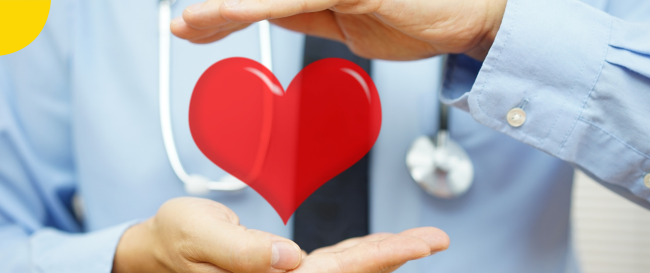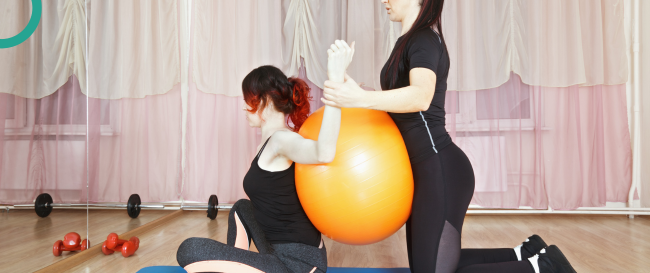In last week’s article, we talked about the causes of high blood pressure.This week, we’re going to discuss tips and recommendation for exercising with hypertension.
Exercise Safely
If you have high blood pressure, exercise can make a big difference. Regular physical activity makes your heart stronger. Moderate physical activity is safe for most people, but before you start a new activity plan, talk to your healthcare team. Working together, you can set the right goals for you. Drink plenty of water before, during, and after exercise – unless you were instructed otherwise. Exercise indoors if it’s really hot, humid, or cold outside. If you take high blood pressure medication, be aware of how they can affect your activity. Beta blockers and some other blood pressure medications may affect your heart rate. Discuss your medications, and when to take them, with your doctor or healthcare team.
Monitor Your Blood Pressure Regularly!
Measure your blood pressure before exercising. If the numbers are very high or low, then don’t exercise and contact your healthcare team. By high or low we mean:
- Very high—higher than 180 top (systolic) or higher than 120 bottom (diastolic) and your numbers remain high after resting for five minutes.
- Very low—lower than 100/50 and you feel dizzy. Stop exercising if you feel sudden pain or discomfort that increases quickly. If the pain or discomfort doesn’t go away when you stop, contact your healthcare team. Seek care immediately if you have any of these symptoms:
- Chest pain, discomfort, or pressure.
- Discomfort or pain in the arm, neck, jaw, back or stomach.
- Shortness of breath, dizziness, nausea, or irregular heartbeat.
- Discomfort in your stomach (abdomen) that may feel like heartburn.
Basic Exercise Recommendations for Both Aerobic and Resistance Exercise
Aerobic activity means getting your body moving. It can lower your systolic blood pressure by approximately 5 to 8 mmHg. For most people, the goal is to be physically active 150 minutes a week. Start slowly. If you haven’t been active recently, start with 10 to 15 minutes of gentle activity. Slowly increase your activity by 5 to 10 minutes every couple week. Be active throughout the week. Try to add some activity every day—even small amounts at a time. You’ll be surprised how quickly you reach your goals! Warm up and cool down. Do 5 minutes of an easier-paced exercise to warm up and cool down. Use the “talk test.” Follow these guidelines to be sure you’re getting the right level of exercise:
- Moderate level—You can still talk but can’t sing.
- Vigorous level—You can say only a few words before taking a breath.
Strength Training
Strength training makes the muscles do more work than they are used to. It can lower systolic blood pressure by approximately 4 to 5 mmHg. For most people, the goal is to work all muscle groups at least 2 days a week. Start slowly. Begin with a few exercises that are not too hard and add new exercises as you get stronger. Work up to doing two or three sets of 8 to 10 repetitions for each muscle group. Work all muscle groups. Choose exercises that work each of your muscle groups: legs, hips, abdomen, chest, back, shoulders and arms. Follow these tips to lift weights safely:
- Use the correct technique. If you are not sure, ask an exercise professional for instructions.
- Avoid lifting too much weight.
- Stop lifting a weight when you feel tired.
- Don’t hold your breath when exercising.
Disclaimer – Healthi and its associates offers health and fitness information and is designed for educational and entertainment purposes only. You should consult your physician or general practitioner before beginning a new fitness programme. You should not rely on this information as a substitute for, nor does it replace, professional medical advice, diagnosis, or treatment. If you have any questions or concerns about your health, you should always consult with a physician, general practitioner, or other qualified healthcare professional. Do not disregard, avoid or delay obtaining medical or health
References:
heart.org American Heart Association
health.gov/moveyourway US Department of Health and Human Services
Physical activity and exercise lower blood pressure in individuals with hypertension: narrative review of 27 RCTs
Mats Börjesson 1, Aron Onerup 2, Stefan Lundqvist 3, Björn Dahlöf 4
EIM Rx series_Exercising with High Blood Pressure.pdf (exerciseismedicine.org)
Exercise for Hypertension: A Prescription Update Integrating Existing Recommendations with Emerging Research
Linda S. Pescatello, Hayley V. MacDonald, Lauren Lamberti, and Blair T. Johnson
Evidence for exercise training in the management of hypertension in adults










